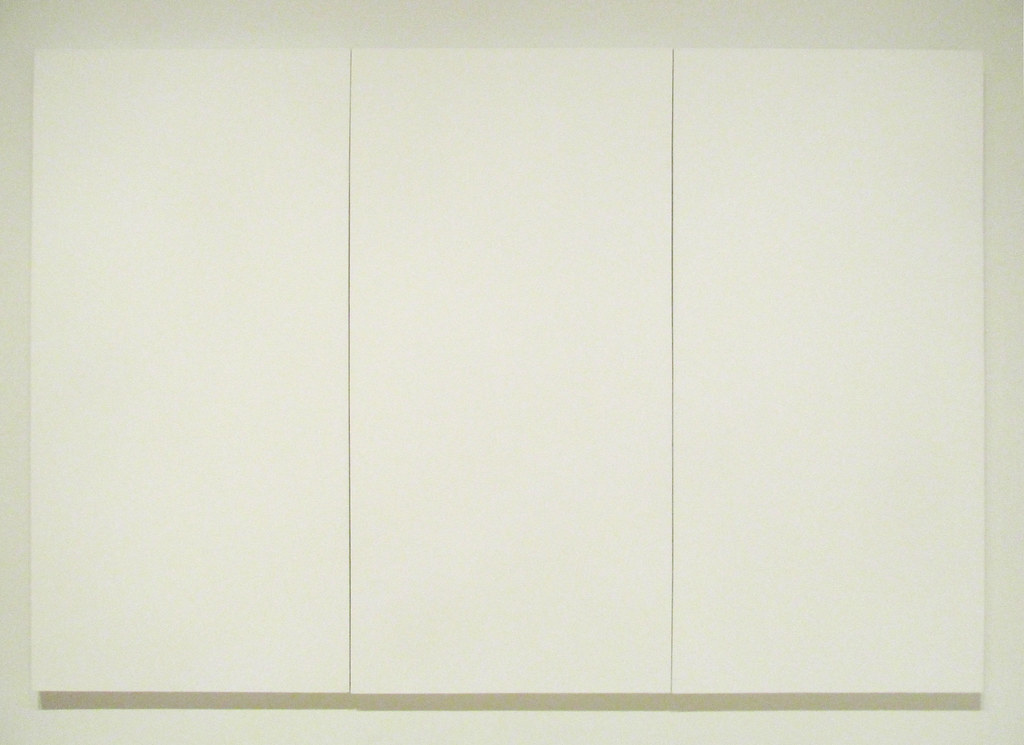by Jarrett Hoffman

•Announcements: Guitar Orchestras registration, Cleveland Repertory Orchestras vacancies, Joyce Awards applications
•Almanac: the premiere of 4′33″, its influences — including the “White Paintings” of Robert Rauschenberg and an experience in a silent chamber — and the difference in its working title
ANNOUNCEMENTS:
Registration for the Cleveland Classical Guitar Society’s 2023-24 Guitar Orchestras ends August 31. More information here.
The Cleveland Repertory Orchestra has announced vacancies for oboe 3 / English horn, utility horn, trombone 2, violin, viola, and bass. The ensemble is also accepting applications for all other sections to join the sub list. Details here.
And the Chicago-based Joyce Foundation is accepting applications for the 2024 Joyce Awards, which support nonprofit arts, culture, and community-based organizations in Chicago, Cleveland, Detroit, Indianapolis, Milwaukee, and/or Minneapolis-St. Paul that partner with artists of color to create new work that engages and builds community. Letters of intent are due September 11. Learn more here.
TODAY’S ALMANAC:
On this date in 1952, one of the most famous and controversial works in music history had its premiere at Maverick Concert Hall in Woodstock, New York. According to the program, the first movement lasted 30 seconds, the second movement for 2 minutes and 23 seconds, and the third for 1 minute and 40 seconds, adding up to a grand total of — yes, 4′33″.
The performer was pianist David Tudor, whose technique was put to the test in the tasks of starting a stopwatch, opening the piano lid, and closing it.
What exactly was heard at the premiere? In an article for NPR, Will Hermes describes Maverick Concert Hall as “a lopsided plank-and-nail affair that seems a cross between a barn and a country church,” located “at the end of a dirt road in the middle of the forest.” So perhaps listeners heard “the sound of the breeze in the trees, rain pattering lightly on the rooftop, the chirping of crickets, a dog barking aimlessly somewhere in the distance, the sound of bodies shifting their weight on creaky pine benches, the sound of breath being drawn and being expired.”
What was not heard was a single sound from the piano. While the work is often described as 4 minutes and 33 seconds of silence, the focus from John Cage — the work’s composer — was on ambient sound, or as Cage called it, “the absence of intended sounds.”
It’s interesting to know about Cage’s influences in writing — perhaps the better word is conceiving — the piece.
One was the “White Paintings” of his friend, the artist Robert Rauschenberg. That series consists of large canvases painted entirely white. The result, according to Leah Dickerman of the Museum of Modern Art, is “a canvas that acts as a screen, is sensitive to the ambient effects of a room, to the flickering qualities of light, and shadow, and weather.”
Another influence was an experience inside an absolutely silent “anechoic” chamber at Harvard University. “When it’s quiet, ears will adapt,” says Steven Orfield, the founder of Orfield Laboratories in Minneapolis, which contains an anechoic chamber that holds the record as the quietest place on Earth. “The quieter the room, the more things you hear. You’ll hear your heart beating, sometimes you can hear your lungs, hear your stomach gurgling loudly. In the anechoic chamber, you become the sound.”
It’s also interesting to know the working title for the piece from early on in its conception: Silent Prayer. How different an effect that has on preparing the listener. The title 4′33″ better suggests an experience that is entirely unmediated. It feels scientific, detached, measured. The title Silent Prayer, on the other hand, gives the listener a direction for how to experience the piece — perhaps it is helpful, or perhaps it imposes — and makes it sound more human and personal.
Click here to watch a performance by pianist Kyle Shaw — or better yet, give yourself a private performance of your own — and let both of those titles swirl around in your head, in different ways informing your experience of those particular 4 minutes and 33 seconds.
Photo by Rob Corder.

